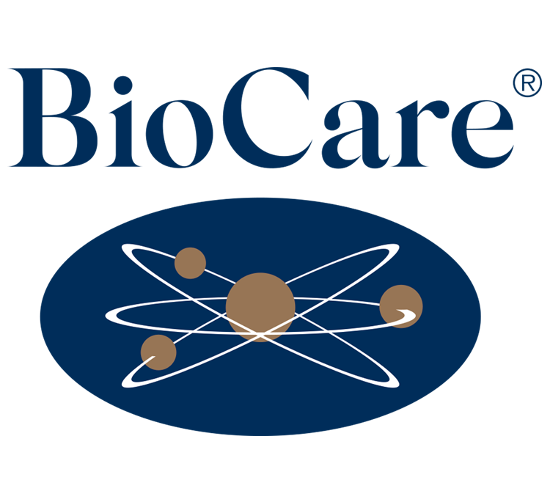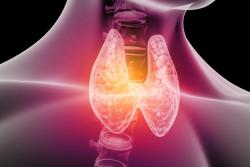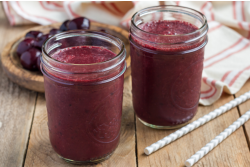Feeling bunged up? Itchy eyes? Scratchy throat? Sneezing? These are all symptoms often associated with hay fever. Hay fever is a common allergic condition, which can occur seasonally, typically between March and September. It has been reported to affect between 10 and 30% of adults, and around 40% of children in the UK.1
Other symptoms can include:
- Runny and/or itchy nose
- Red, watery eyes
- Blocked nose with difficulty breathing
- Loss of sense of smell and/or taste
- Wheeziness or shortness of breath
- Low energy and fatigue
- Dry, tickly cough
- Pressure and/or pain over cheeks or forehead
These symptoms are triggered by an allergic reaction to pollen; a very fine powder which is released from plants as part of their reproductive cycle. You can have an allergy to tree, grass, or weed pollen, which all have different times of release throughout the year, with grass pollen allergy being the most common. On inhalation, the immune system responds to pollen as if it were a threat, such as a virus or pathogenic bacteria, and mounts a rapid response resulting in symptoms. However, unlike with viral or bacterial infections, the symptoms of hay fever can last for months due to ongoing pollen exposure.
There are a few risk factors which can predispose us to this condition. Having a pre-existing allergic condition, such as asthma or eczema, can often be associated with an increased risk of hay fever. In children, this can be known as ‘allergic’ or ‘atopic march’, which refers to the progression of allergic conditions in infants, where the presence of one allergic condition as a child can increase the risk of developing another allergic condition.2
Additionally, a family history can also contribute to hay fever prevalence. Other factors such as exhaust fumes and cigarette smoke can exacerbate and provoke hay fever symptoms.3,4 Prevention is therefore key at reducing the risk of hay fever and the severity of associated symptoms, especially if you already have an allergic condition. For best results, you need to start preparing your body early, ideally 2-3 months before the pollen season begins.
What is histamine?
Histamine is a molecule released by immune cells in the circulation and in tissues (e.g. beneath the skin) as part of an immune response. During the immune response, histamine release and vasodilation of blood vessels brings blood and immune cells to the affected area, resulting in redness, heat, swelling, and the upregulation of mucus production. Histamine plays a key role in inflammation, especially in allergic reactions.
Individuals with allergies tend to have a higher baseline histamine level, prolonging inflammatory signaling.5 High histamine may be caused by poor detoxification of histamine or high histamine loading from diet (e.g. from histamine-rich foods like aged cheese and cured meats). The clearance or detoxification of histamine can be done via several pathways involving different enzymes, for example diamine oxidase (DAO), histamine-N-methyltransferase (HNMT), and monoamine oxidase B (MAO-B). Mutations or SNPs (Single Nucleotide Polymorphisism) on the genes which code for these enzymes can reduce our ability to detoxify histamine, keeping levels higher. As well as this, other factors such as gut permeability, poor gut microbiome and stress can all further contribute to our overall histamine level and ability to detoxify effectively.6
So, prevention is vital - What are the key nutrients to support hay fever?
- Quercetin, is an antioxidant found in many fruit and vegetables, namely apples. It possesses anti-inflammatory properties and is a natural anti-histamine.7
- Nettle extract works on several immune pathways that are upregulated in allergic conditions. It has the ability to block histamine activity, and other pro-inflammatory molecules involved in hay fever.8
- Bromelain is a protein-digesting enzyme derived from pineapples, mostly the stem/core. It has anti-inflammatory and immune balancing properties, directly acting on immune cells.9
- Vitamin C supports histamine detoxification, aiding with clearing it from the body.10
- B vitamins, such as B6, B2, B12 and folate, are also important for supporting histamine clearance, and can act as cofactors for detoxification pathways and some of the above mentioned enzymes.
- Essential fats omega-3 and -6, can also help to reduce inflammation and are involved in the production of anti-inflammatory immune molecules.11,12 These can be found in foods such as oily fish, freshly ground flaxseeds, avocados, and walnuts.
- Probiotics can further help to reduce inflammation and boost the immune system, specifically the strain Lactobacillus rhamnosus, which has been proven effective in preventing early atopic disease in children at high risk.13 There is also a strong link between gut health and the presence of allergies, so probiotic supplementation could be further beneficial, especially if you suffer with multiple allergic conditions.
Alongside nutrient support, there are also lifestyle changes which can help to improve hay fever symptoms:
- Consider purchasing an air purifier, as this can help to filter out some of those airborne allergens.
- Close your windows when the pollen count is high.
- Avoid histamine rich food, such as alcohol, cured meats, and aged cheeses.
- Avoid drying washing outside on high pollen days.
- Monitor the pollen count by checking your local weather conditions. On wetter days, the pollen count tends to be lower.
- Consuming local honey every day has been shown to reduce hay fever symptoms.14 This can be purchased from local farm shops or health shops.
If you suffer from hay fever, making these dietary and lifestyle changes, and starting early before the pollen season, could help with the management of symptoms. Doing so will hopefully enable you to enjoy the warmth and daylight that the spring and summer months bring.
________________________________________________________________________________
Got a question?
The brand you can talk to:
We have a team of Nutritionists at the end of our advice line, open to you, for product support and advice (5 days a week). 0121 433 8702 or clinicalnutrition@biocare.co.uk
Or head to our advice page where you can find Healthnotes.
Not registered for an account with BioCare®?
You can register now to receive up to date news, product information and exclusive offers whether you are a consumer, practitioner or retailer.
________________________________________________________________________________
References
1 https://www.allergyuk.org/information-and-advice/s...
2 Bantz SK, et al. The Atopic March: Progression from Atopic Dermatitis to Allergic Rhinitis and Asthma. J Clin Cell Immunol. 2014;5(2):202.
3 Gilliland FS et al. Effect of glutathione-S-transferase M1 and P1 genotypes on xenobiotic enhancement of allergic responses: randomised, placebo-controlled crossover study. Lancet. 2004; 363 (9403): 119-25
4 Thomson NC, Livingston CE. Asthma and cigarette smoking. Eur Resp J. 2004; 24: 822-833.
5 Anvari S et al. Genetic Variation along the Histamine Pathway in Children with Allergic versus Nonallergic Asthma. Am J Respir Cell Mol Biol. 2015;53(6):802-9.
6 Kukkonen et al. High intestinal IgA associates with reduced risk of IgE-associated allergic diseases. Pediatr Allergy Immunol. 2010; 21: 67-73.
7 Otsuka et al. Histochemical and functional characteristics of metachromic cells in the nasal epithelium in allergic rhinitis: studies of nasal scrapings and their dispersed cells. J Allergy Clin Immunol 1995; 96: 528-36.
8 Roschek B Jr et al. Nettle extract (Urtica dioica) affects key receptors and enzymes associated with allergic rhinitis. Phytother Res. 2009;23(7):920-6.
9 Müller S et al. Placebo-controlled randomized clinical trial on the immunomodulating activities of low- and high-dose bromelain after oral administration - new evidence on the anti-inflammatory mode of action of bromelain. Phytother Res. 2013;27(2):199-204.
10 Tecklenburg SL et al. Ascorbic acid supplementation attenuates exercise-induced bronchoconstriction in patients with asthma. Respir Med. 2007;101(8):1770-8.
11 Calder. n?3 Polyunsaturated fatty acids, inflammation, and inflammatory diseases. Am J Clin Nutr. 2006; 83 (6): S1505-19.
12 Terano et al. Eicosapentaenoic acid as a modulator of inflammation, effect on prostaglandin and leukotriene and leukotriene synthesis. Biochem Pharmacol. 1986; 35: 779-85.
13 Kalliomäki M, Salminen S, Arvilommi H, Kero P, Koskinen P, Isolauri E. Probiotics in primary prevention of atopic disease: a randomised placebo-controlled trial. Lancet. 2001; 7;357(9262):1076-9.
14 Asha'ari ZA, et al. Ingestion of honey improves the symptoms of allergic rhinitis: evidence from a randomized placebo-controlled trial in the East coast of Peninsular Malaysia. Ann Saudi Med. 2013 Sep-Oct;33(5):469-75.





